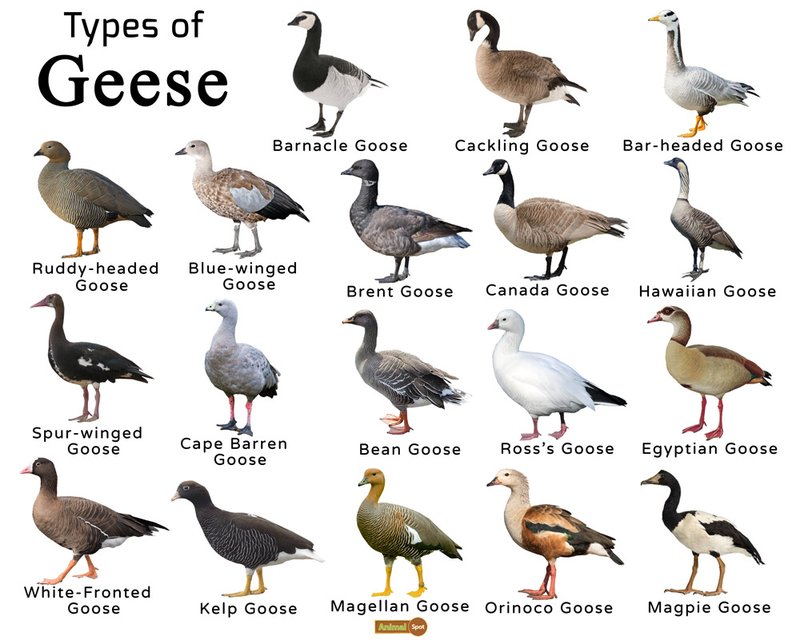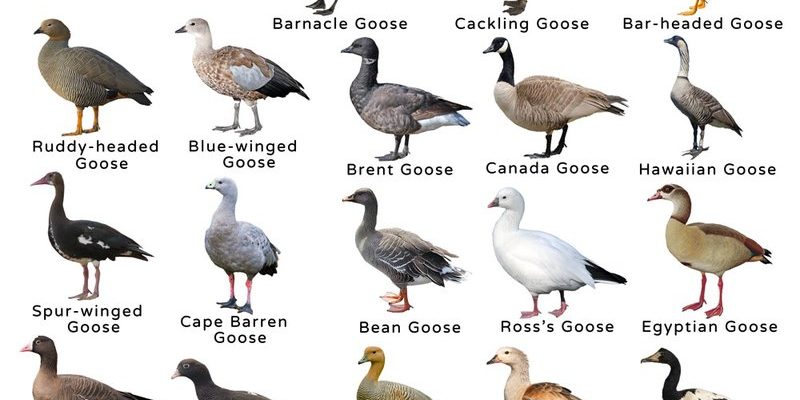
So, what’s the deal with geese? Think of them like the rowdy cousins at a family gathering—they have their distinct personality, and while they might seem similar to other birds, they’re unmistakably themselves. In this article, we’re going to dive into what truly makes geese different from their feathered friends, like ducks and swans, and even some lesser-known species.
Understanding the Goose: General Characteristics
Geese are large waterfowl that belong to the family Anatidae, known for their distinctive honking calls and strong migratory patterns. Generally, geese are characterized by their long necks, stout bodies, and webbed feet. They have a robust beak that’s perfect for grazing on grasses and other vegetation, making them primarily herbivorous. You might have seen them waddling across fields or swimming gracefully in a pond.
One of the most interesting aspects of geese is their social behavior. Geese are highly social animals. They often live in family units or larger flocks, and they form strong bonds with their mates. In fact, many species of geese mate for life, which is quite romantic in the animal kingdom! Their social structures are crucial, especially during migration when they fly in impressive V-formation to conserve energy.
Geese vs. Ducks: Key Differences
You might find yourself wondering how geese stack up against ducks. Both belong to the Anatidae family, but there are notable differences that set them apart. For starters, geese tend to be larger and have longer necks than ducks. Ducks are more diverse in terms of color and markings, while geese usually have more uniform plumage.
In terms of behavior, ducks are often seen dabbling on the water’s surface, searching for food. On the other hand, geese prefer to graze on land, using their strong beaks to eat grass and grains. Ducklings are known for being quite curious and adventurous, often diving underwater, while goslings (young geese) stay close to their parents and are more cautious. It’s like comparing a playful puppy to a steady, protective older dog!
Geese and Swans: Similarities and Differences
Now, let’s talk about swans. It’s easy to confuse these elegant birds with geese, especially since they often inhabit the same environments. But while both share some features, like webbed feet and long necks, they diverge significantly in size and behavior. Swans are generally larger and have a more graceful appearance with longer, more slender necks.
Socially, swans are known for their beauty and courtship displays, creating elaborate mating rituals that can last for days. Geese, while also social, are a bit more robust in their interactions. They can be quite feisty, especially when defending their territory. Interestingly, while swans are mainly monogamous, geese also form lifelong bonds, showcasing loyalty and commitment in the bird world that’s quite touching to observe.
Identifying Different Goose Species
Did you know there are numerous species of geese, each with its own unique traits? The most common are the Canada goose, greylag goose, and the Egyptian goose. The Canada goose is easily recognizable with its black head and white cheek patches. You’ll often spot them leading the pack during migration.
The greylag goose, on the other hand, has a more muted appearance with grey plumage and pink legs and beak, and it’s one of the ancestors of most domestic geese you see today. Then there’s the Egyptian goose, which sports striking brown and grey feathers with distinct facial markings. Each of these species plays a unique role in their ecosystem, from grazing on grasslands to contributing to local biodiversity.
The Role of Geese in Their Ecosystem
Geese aren’t just here for our entertainment; they play a vital role in their ecosystems. As grazers, they help manage plant growth, which can benefit other wildlife. By eating grass and leaves, they encourage new plant growth, which in turn supports insects and other animals.
Additionally, geese are important for nutrient cycling. Their droppings are rich in nitrogen and phosphorus, which fertilize the soil and promote healthy ecosystems. So, while they might seem like a nuisance when they’re honking around your picnic, they’re actually playing an essential role in maintaining the balance in nature.
Understanding Goose Behavior: Migration and Social Structures
Let me explain a bit about their migration patterns. Many species of geese are migratory, traveling thousands of miles between their breeding and wintering grounds. This incredible journey is often a family affair, with young goslings learning from their parents. They usually migrate in V-shaped formations, which helps conserve energy and keeps them aligned during flight.
Socially, geese display fascinating behaviors, from their complex vocalizations to their body language. You might notice they have a strong sense of territory; they’re known to be quite protective of their nests. Their strong social bonds help them navigate the challenges of migration, breeding, and foraging, showcasing their intelligent behavior.
The Impact of Humans on Goose Populations
Sadly, geese face numerous challenges due to human activity. Habitat loss, climate change, and hunting have all taken a toll on their populations. Urbanization often encroaches on their natural habitats, making it harder for them to find suitable nesting sites. It’s a tough world out there for our feathery friends!
On the bright side, many conservation efforts are underway. Organizations are working to protect migratory pathways and nesting regions. Public awareness and education on how to coexist with geese can help mitigate conflicts, like how to respect their space during nesting seasons.
In conclusion, geese are fascinating creatures with unique traits that set them apart from other bird species. From their social behaviors and migratory patterns to their important ecological roles, there’s so much more to these birds than meets the eye. So the next time you see a goose honking away, remember there’s a lot going on beneath that ruffled feathered exterior!

